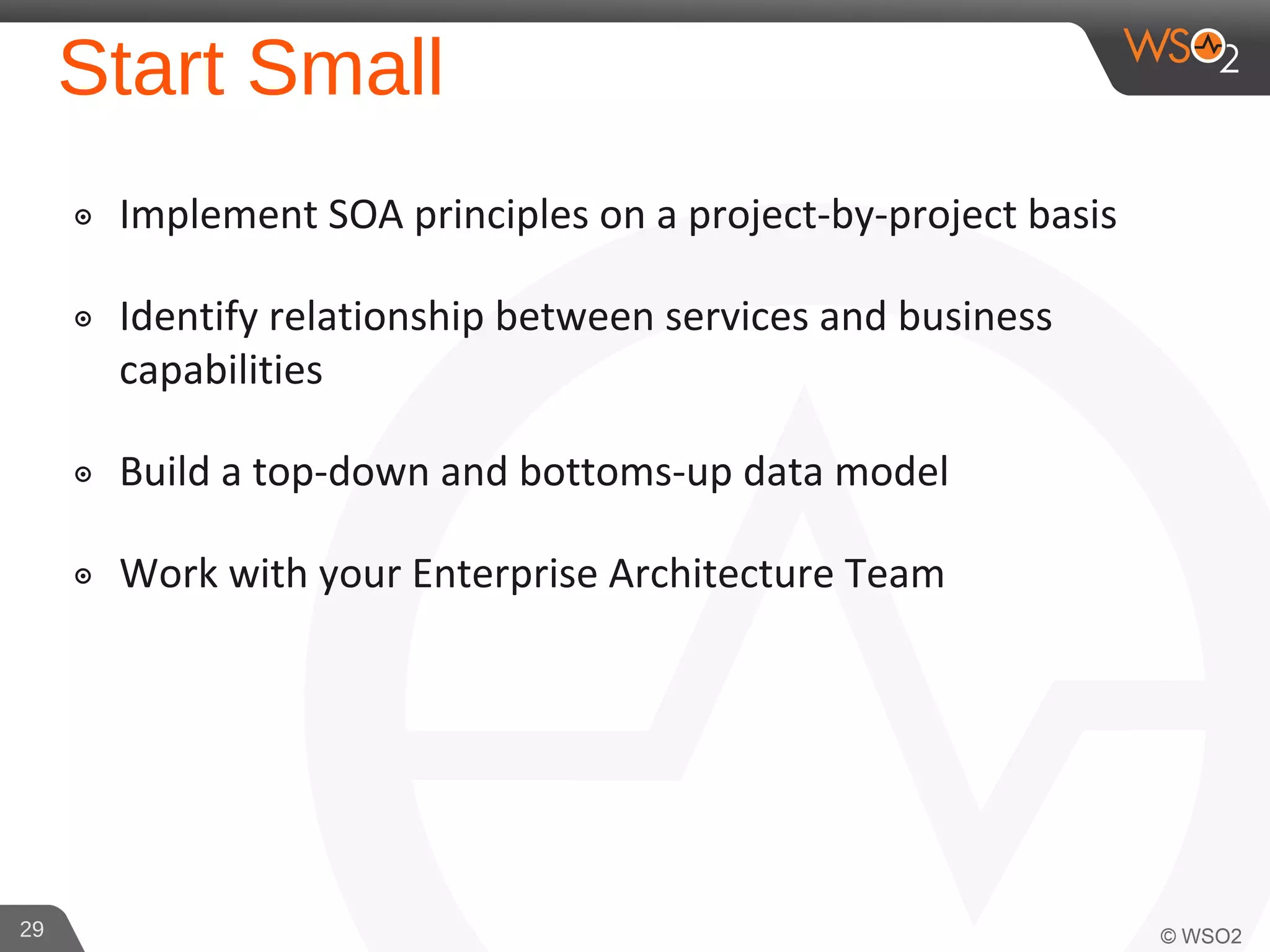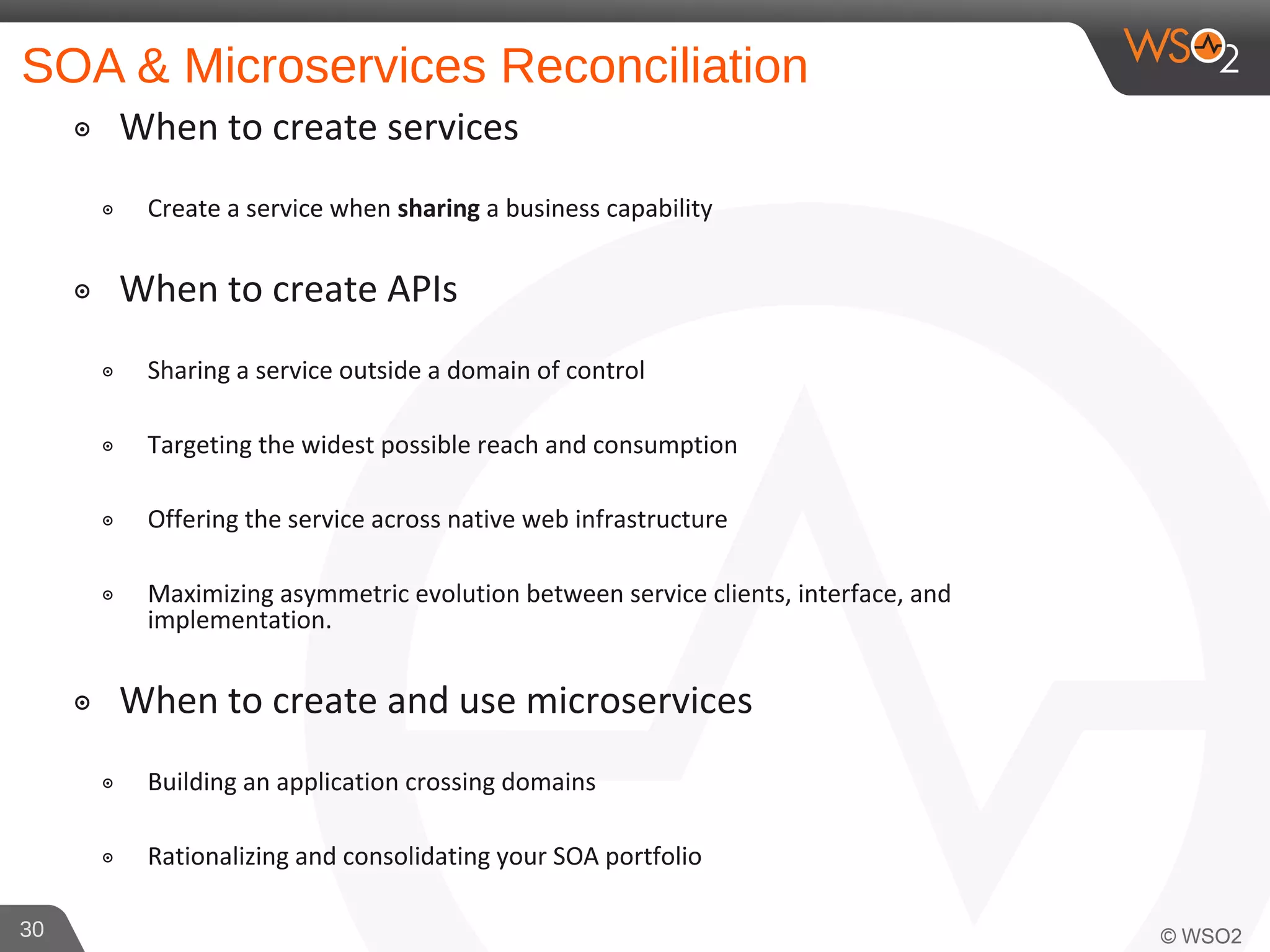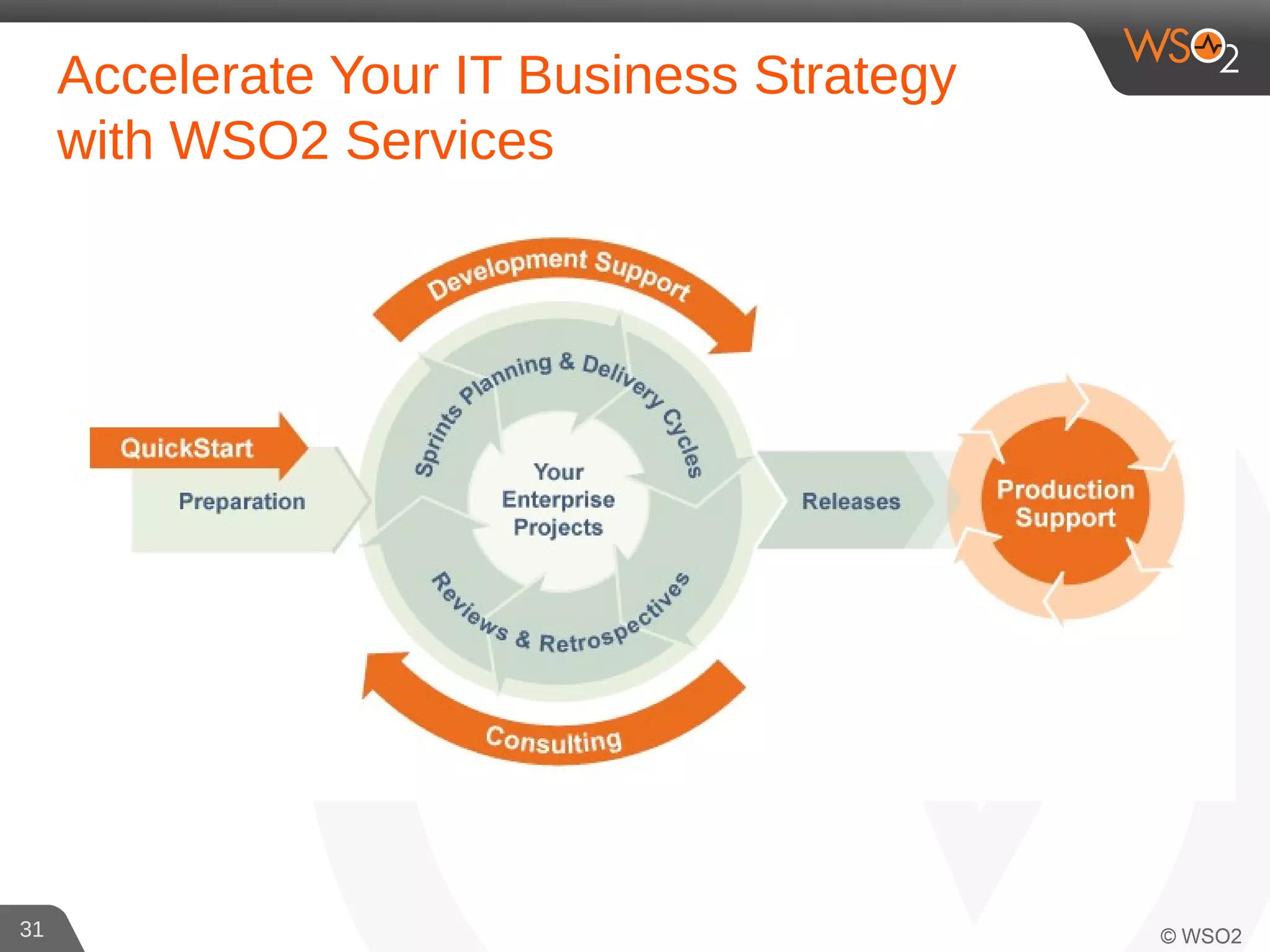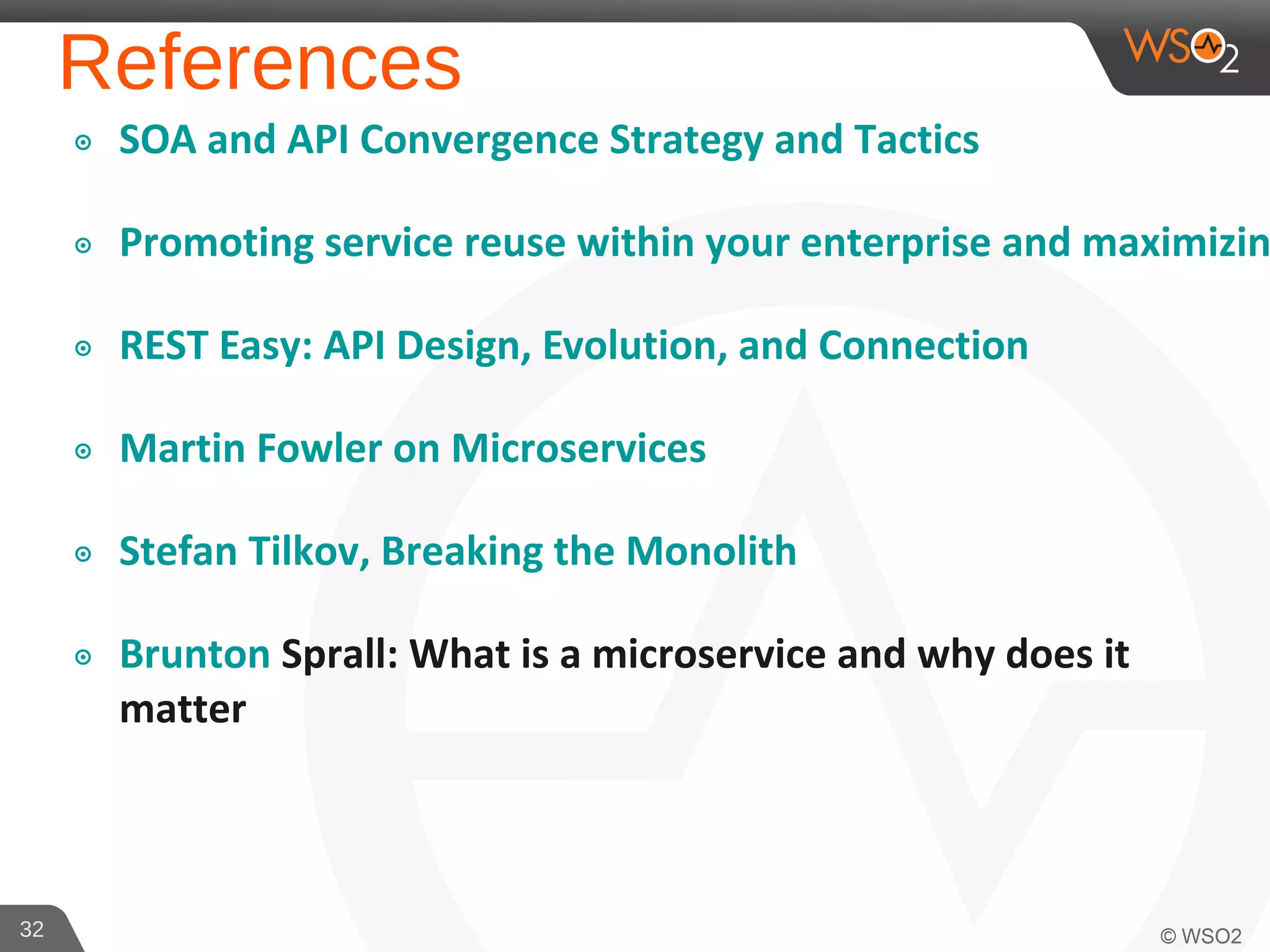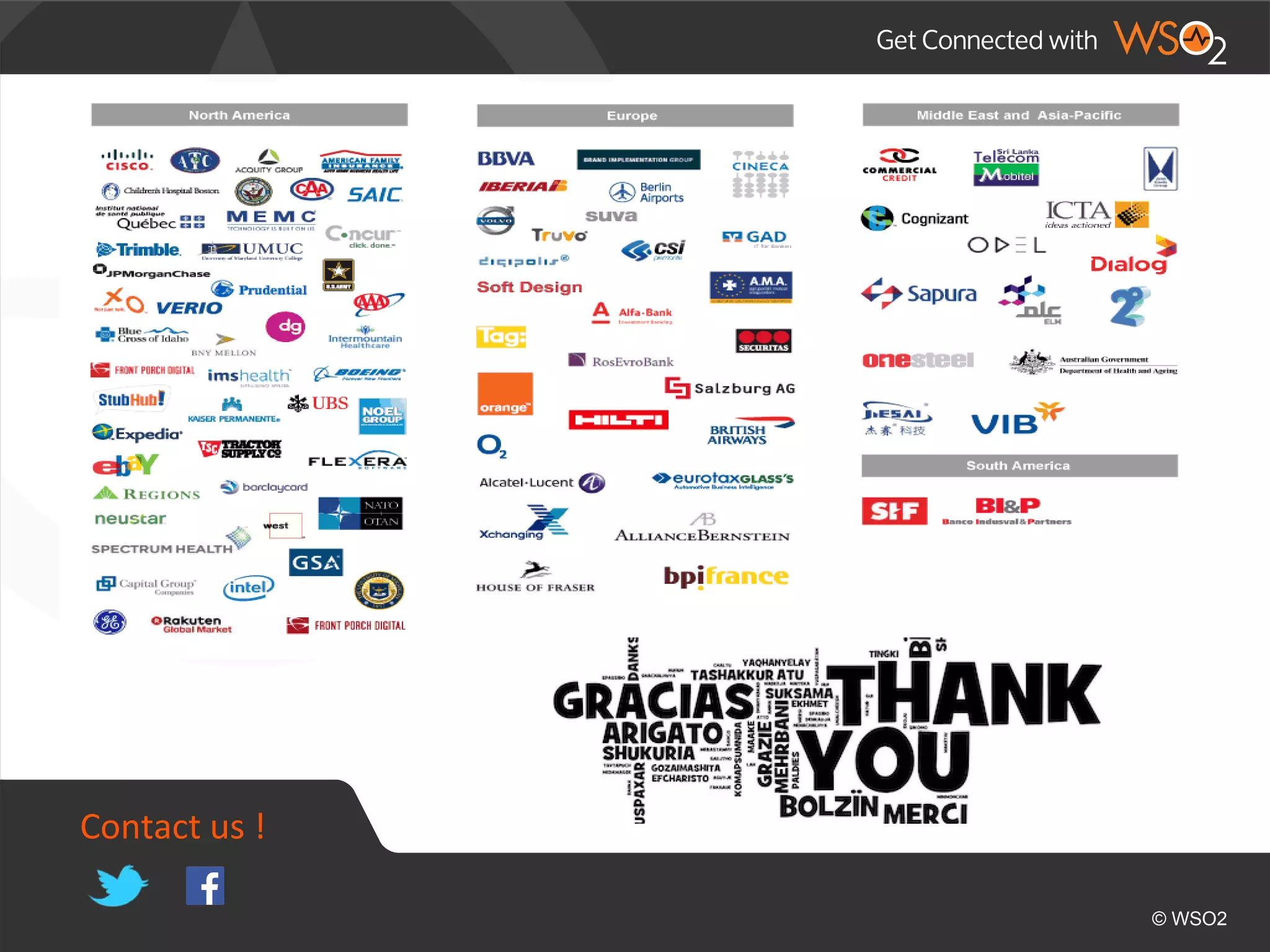This document summarizes Chris Haddad's presentation on merging microservices architecture with SOA practices. The presentation discusses how microservices can help overcome common issues with SOA implementations, such as tight coupling and duplication. It defines microservices and compares them to traditional SOA approaches. The presentation also covers best practices for defining, decoupling, and deploying microservices as well as DevOps patterns that can help overcome challenges in deploying microservices architectures at scale.

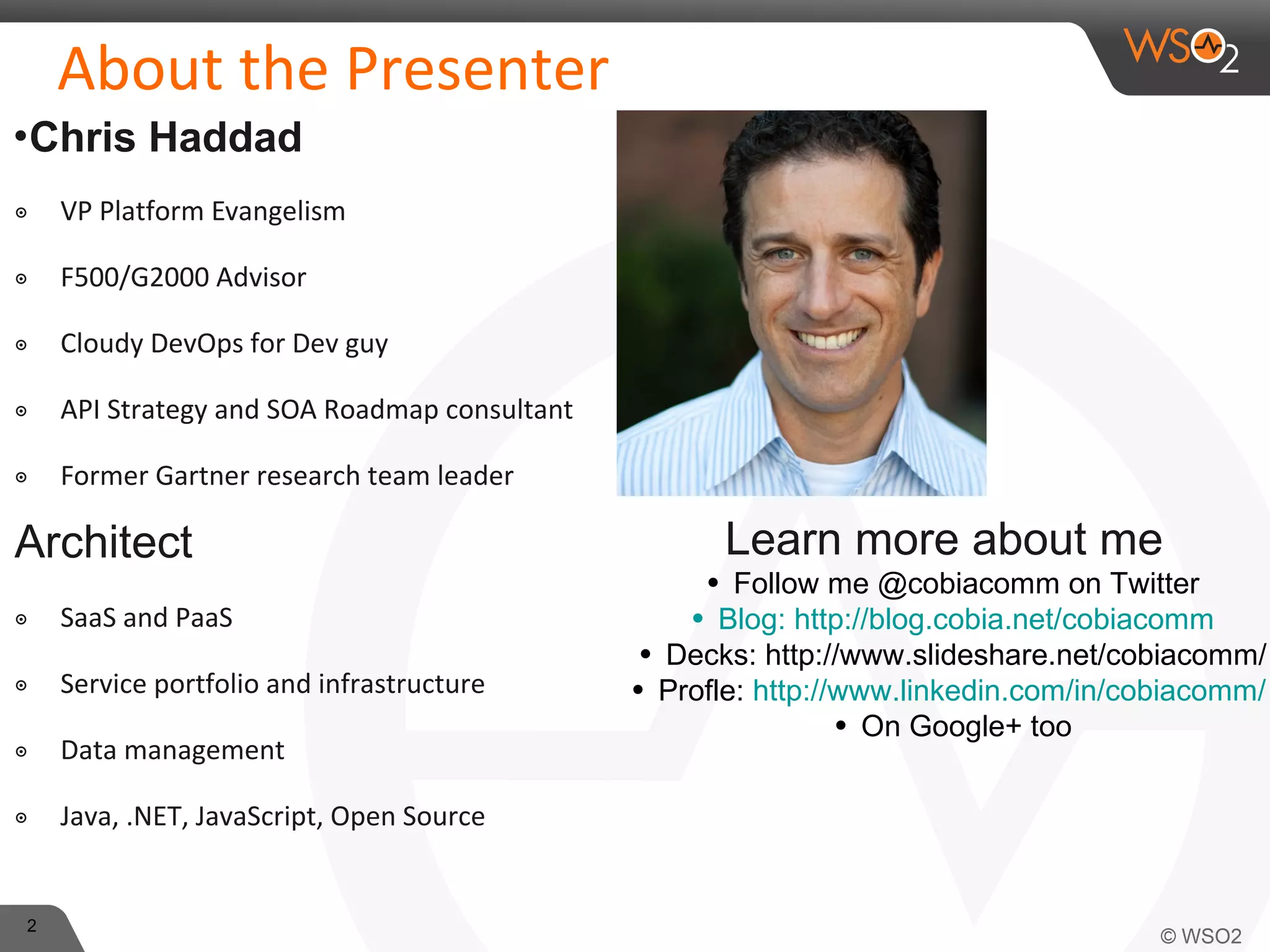
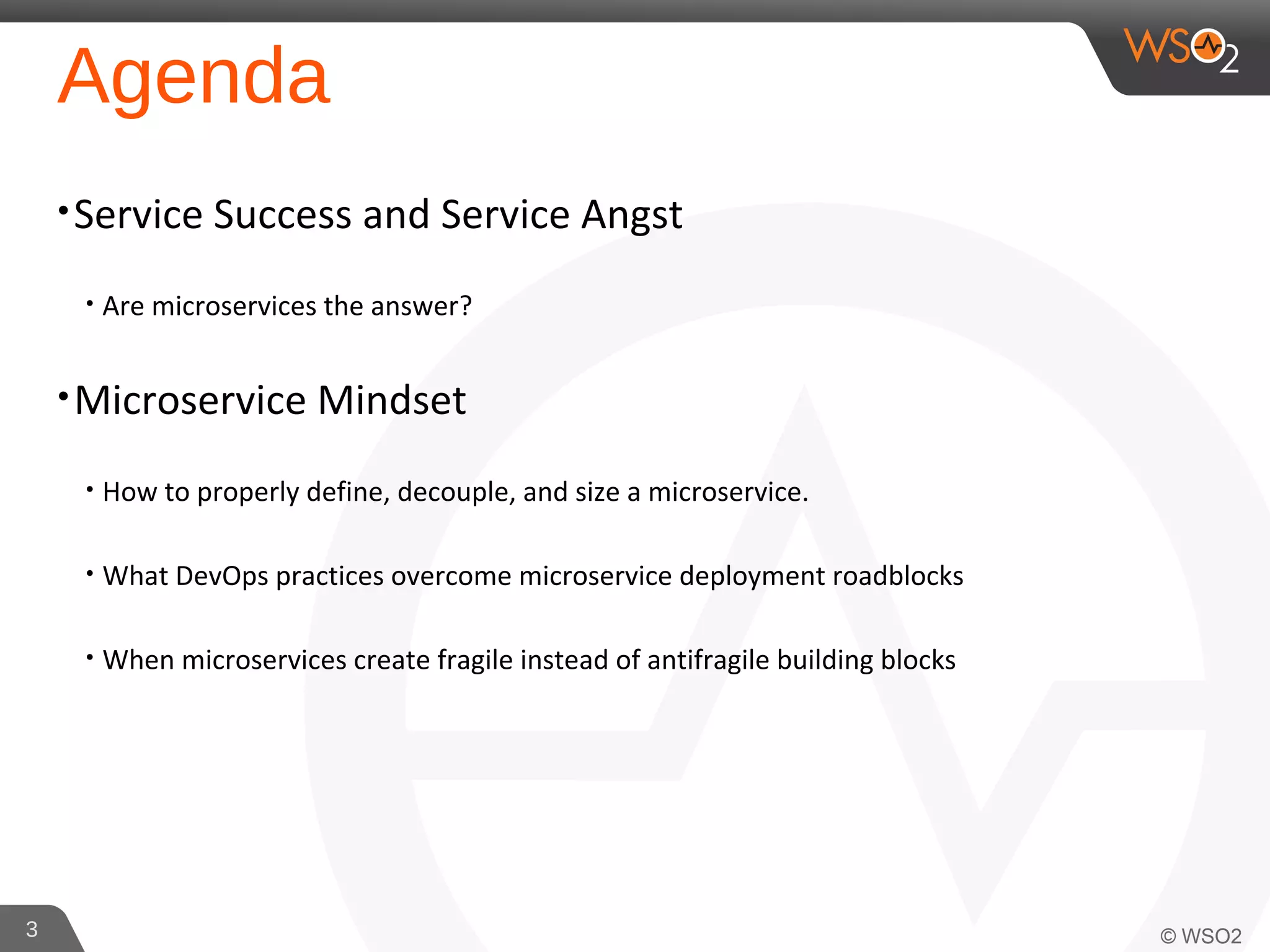
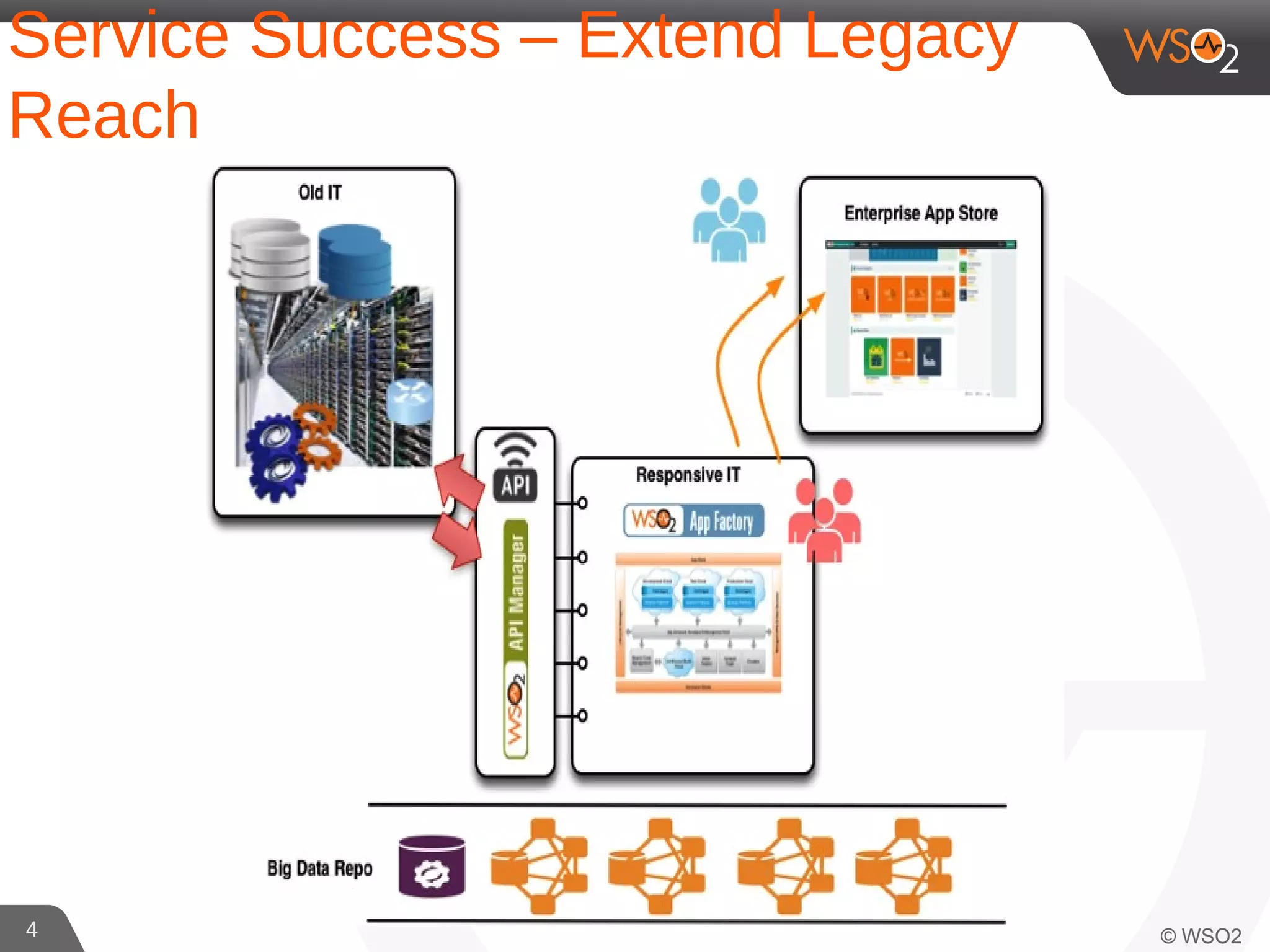
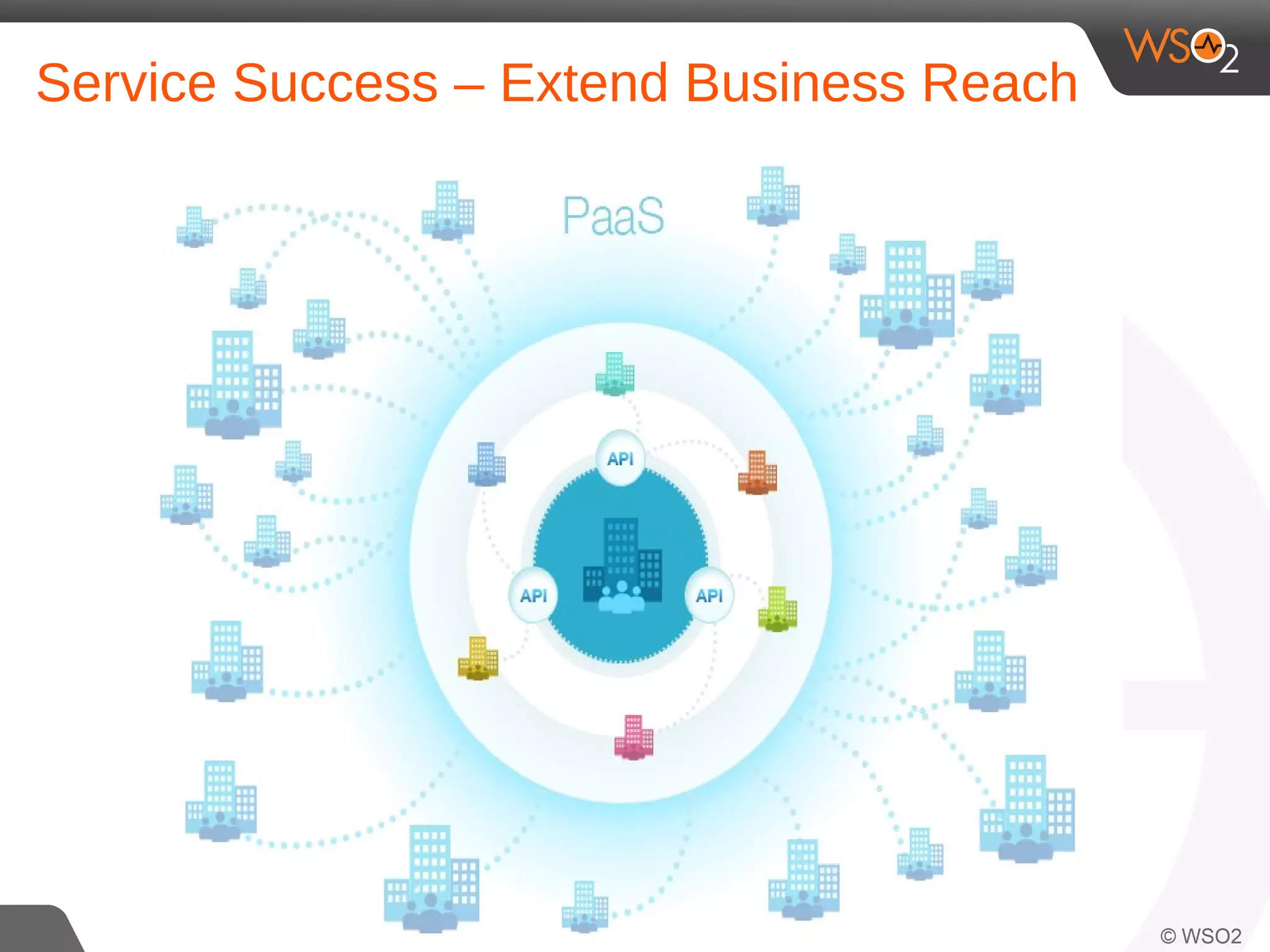
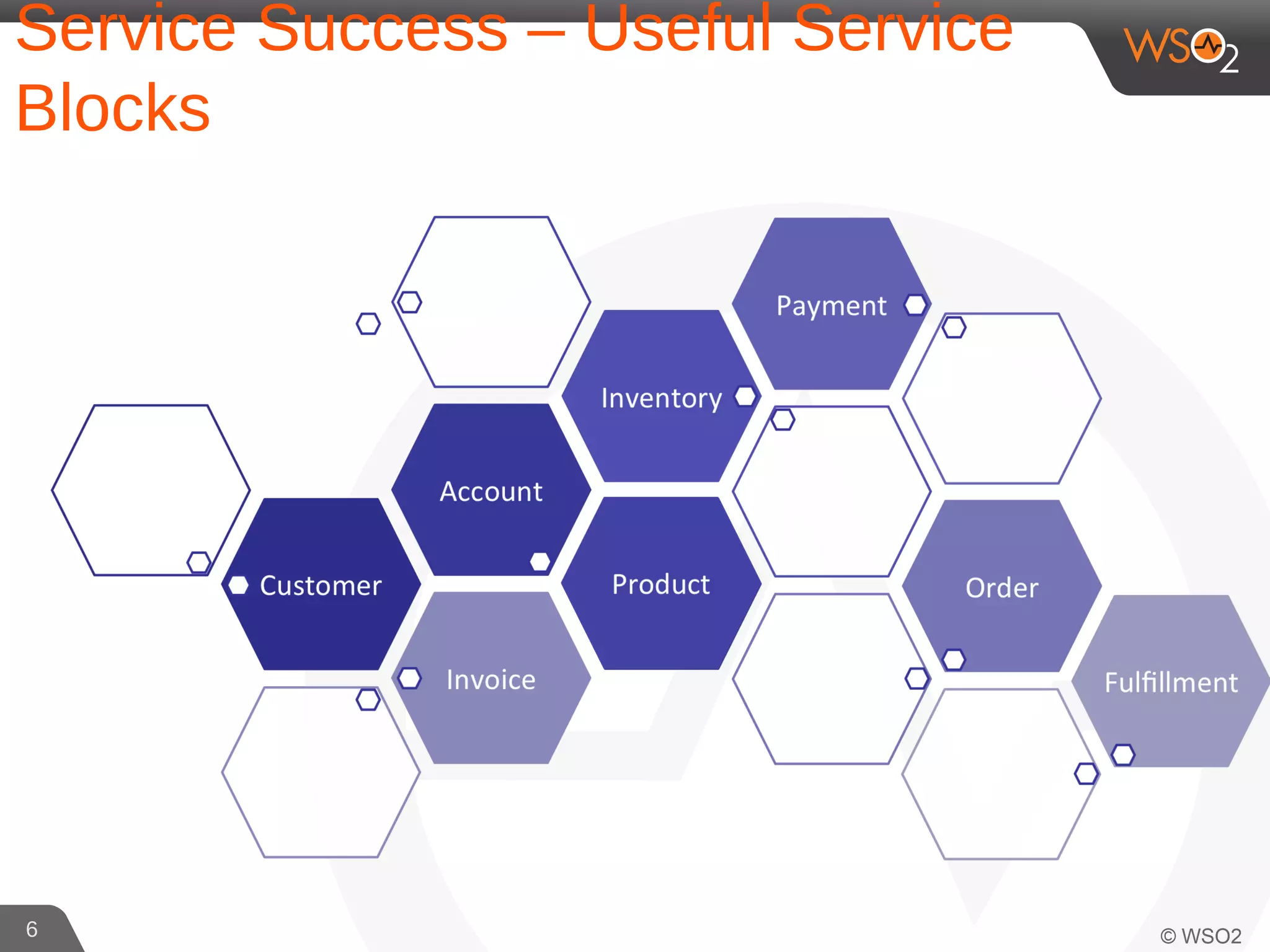
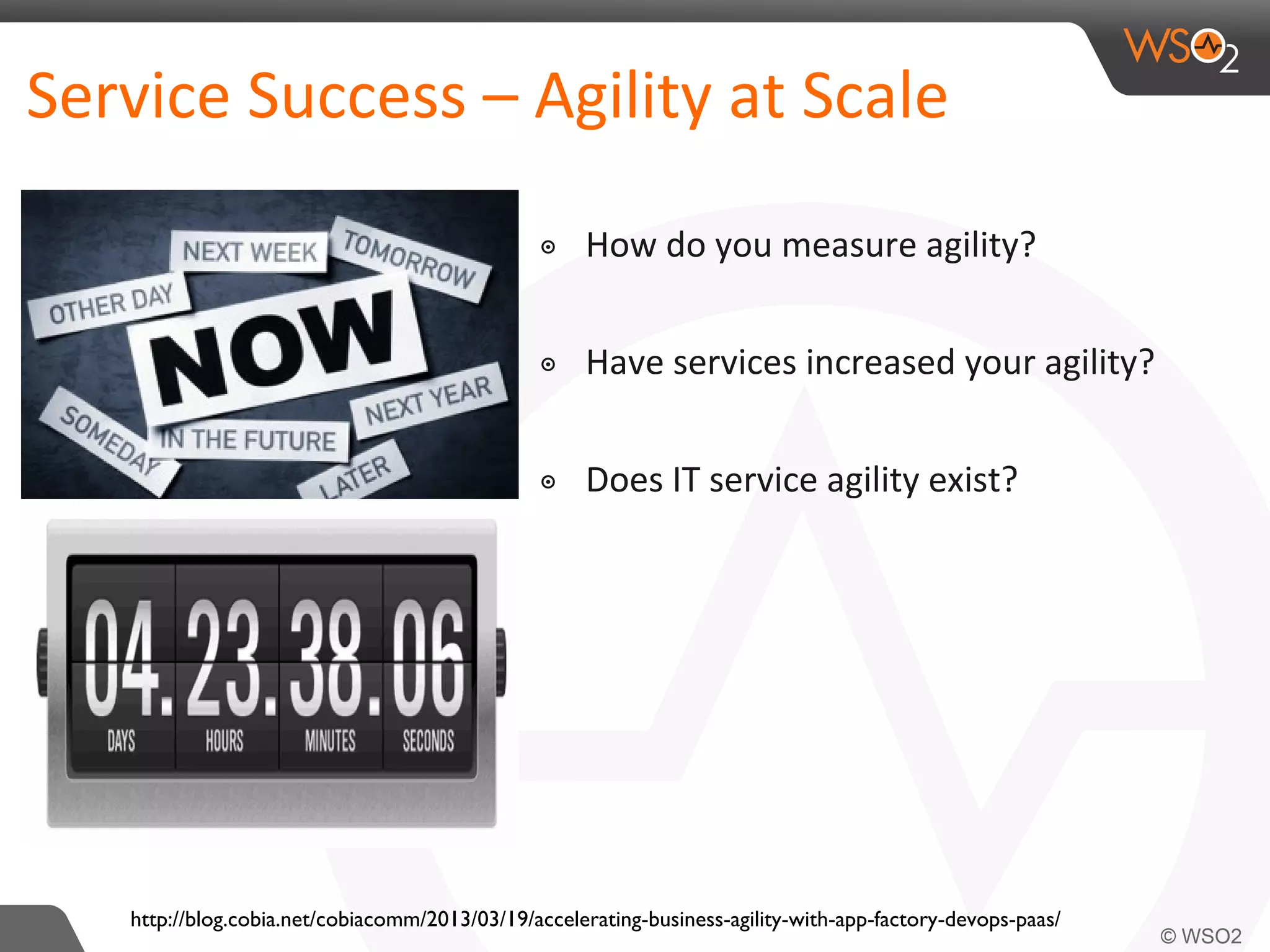
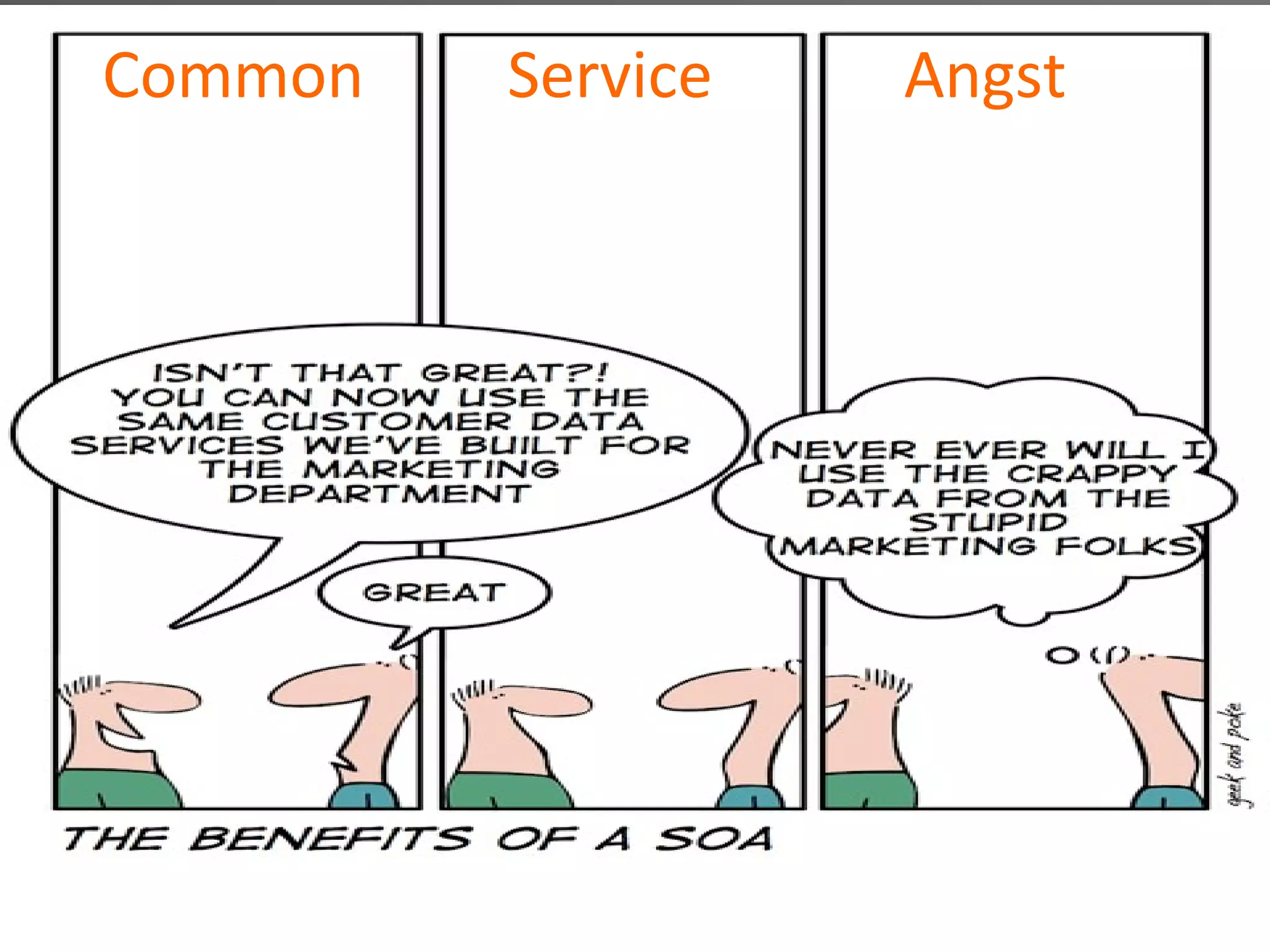
![Do SOA Anti-Patterns Prevail?
Symptoms
๏Isolation, Uniqueness, Duplication
๏Tight Coupling and Build Again
Cause
๏Lack of Trust - Not Invented Here [NIH]
๏Shared Service Invisibility
๏ Teams do not know about a service
๏ Non-functional and functional requirements are not well documented
9](https://image.slidesharecdn.com/microservices-2014-0915-v1-150308180545-conversion-gate01/75/Merging-microservices-architecture-with-SOA-practices-9-2048.jpg)
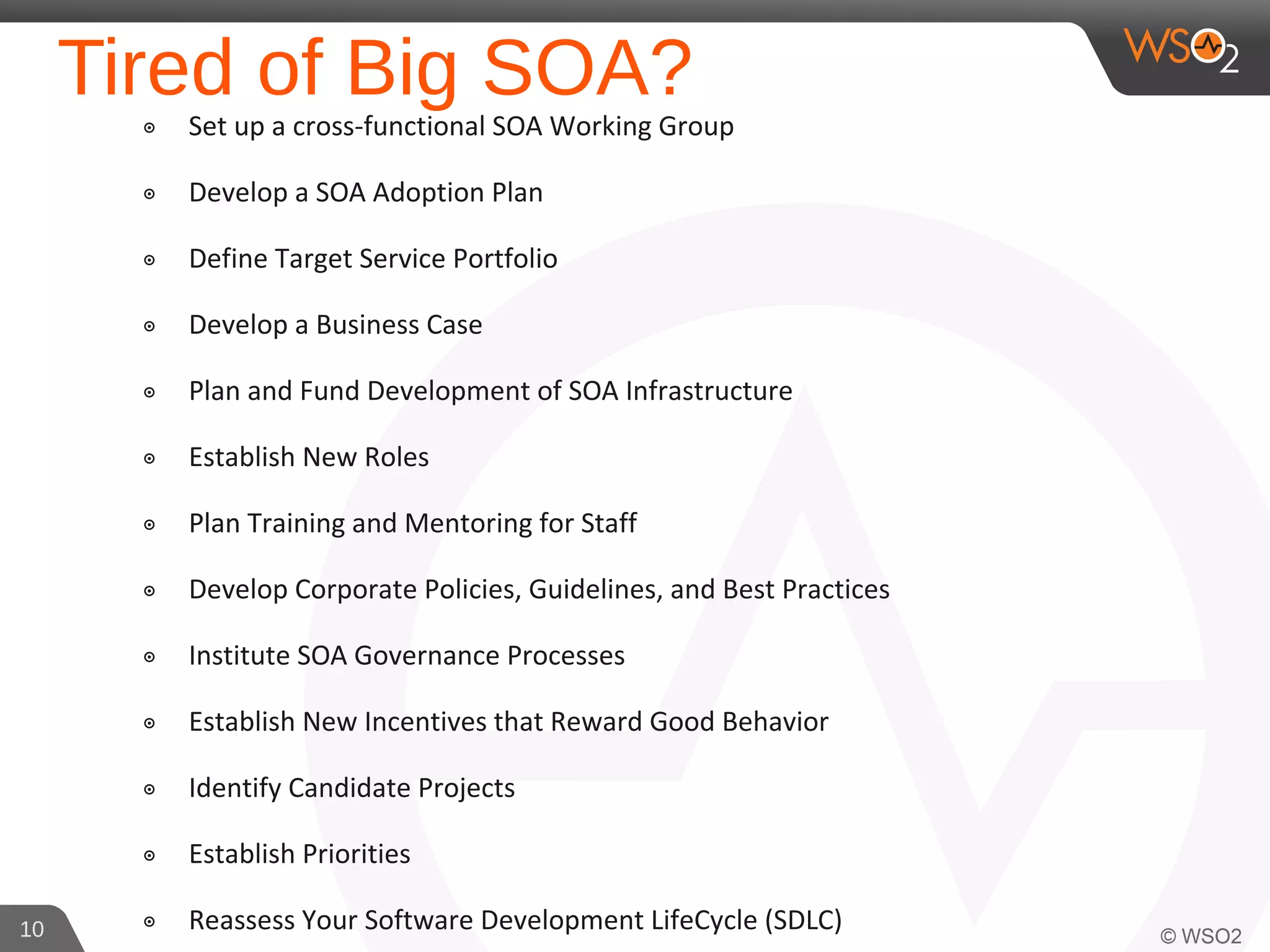

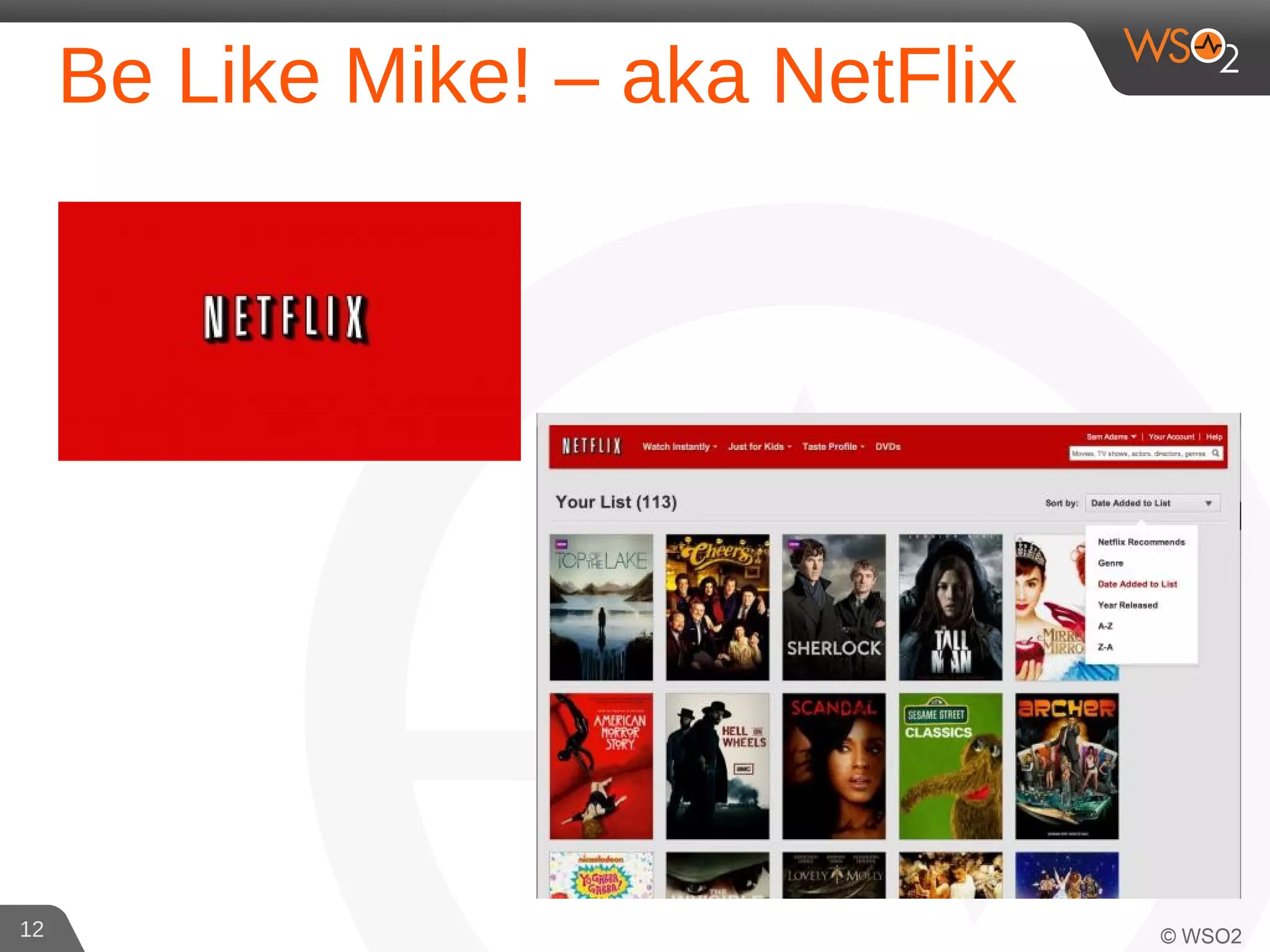
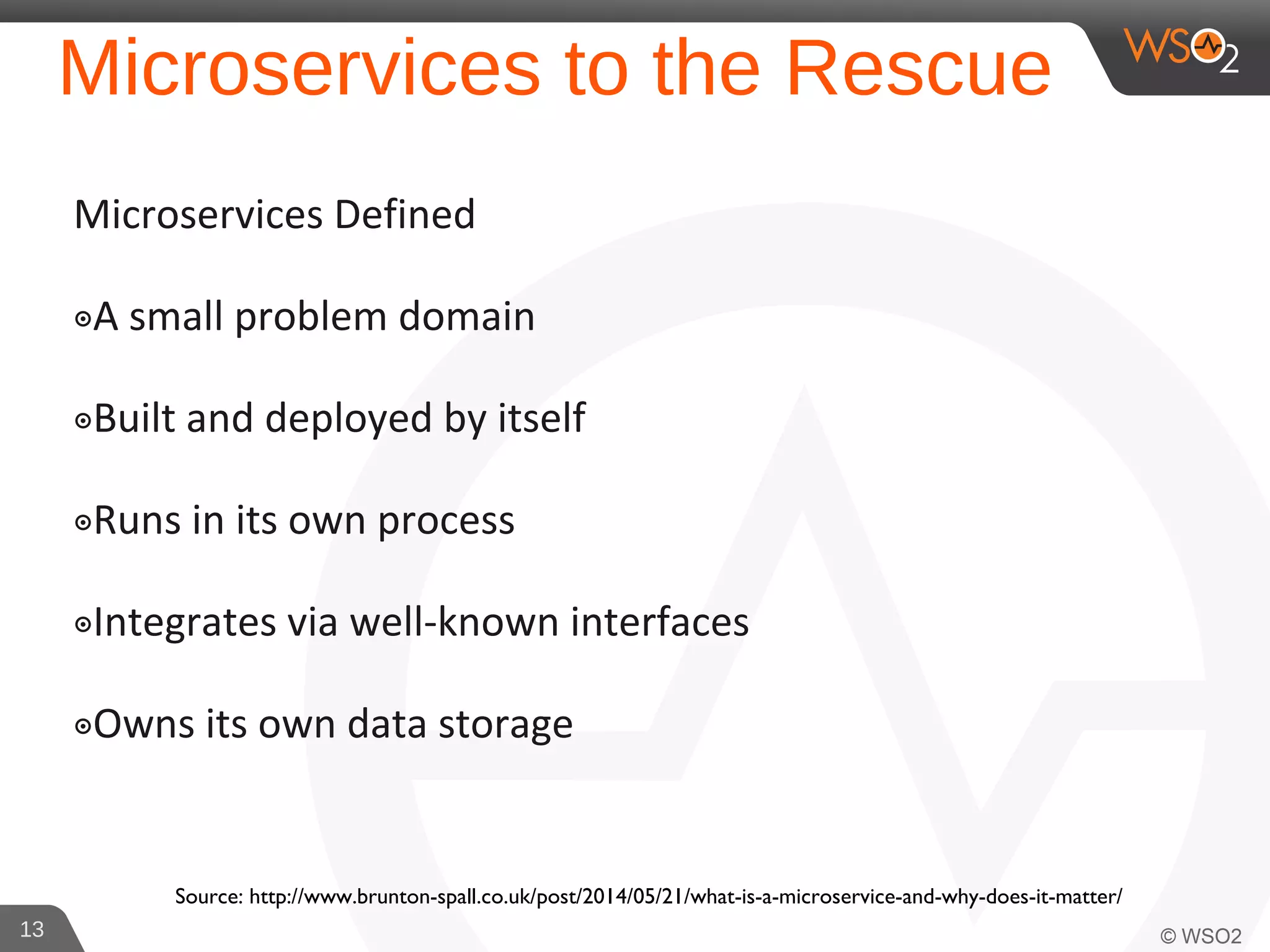
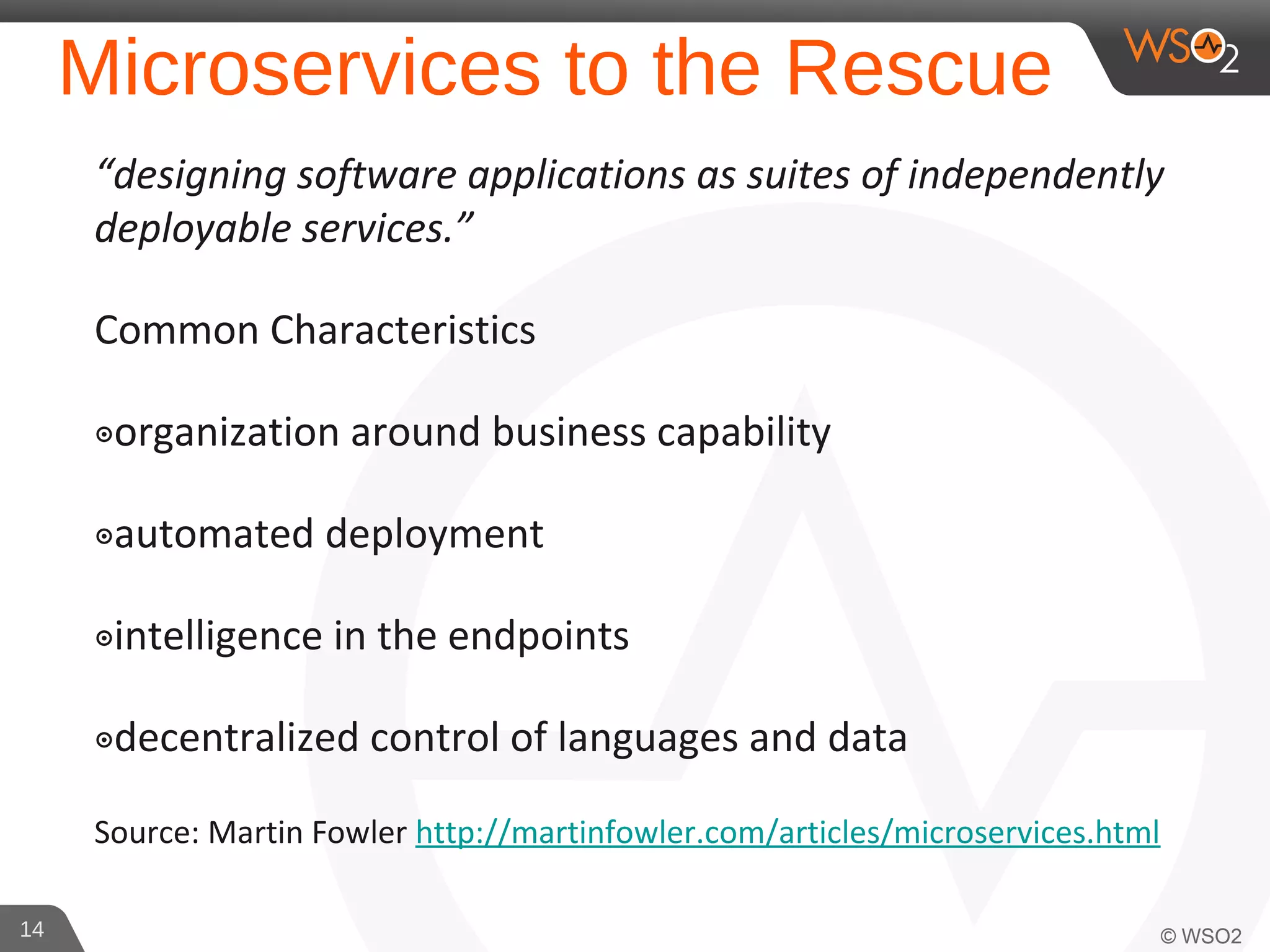
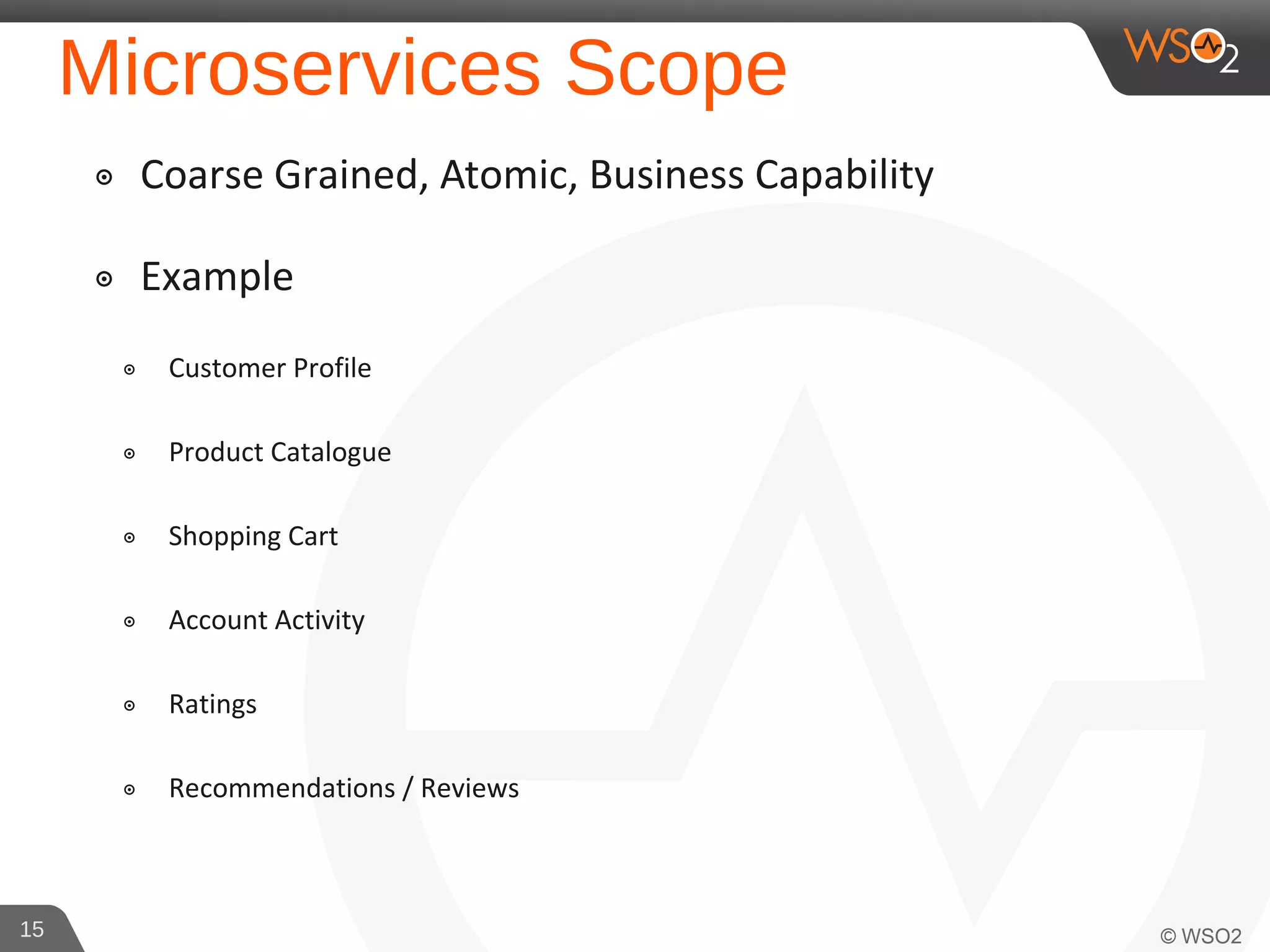
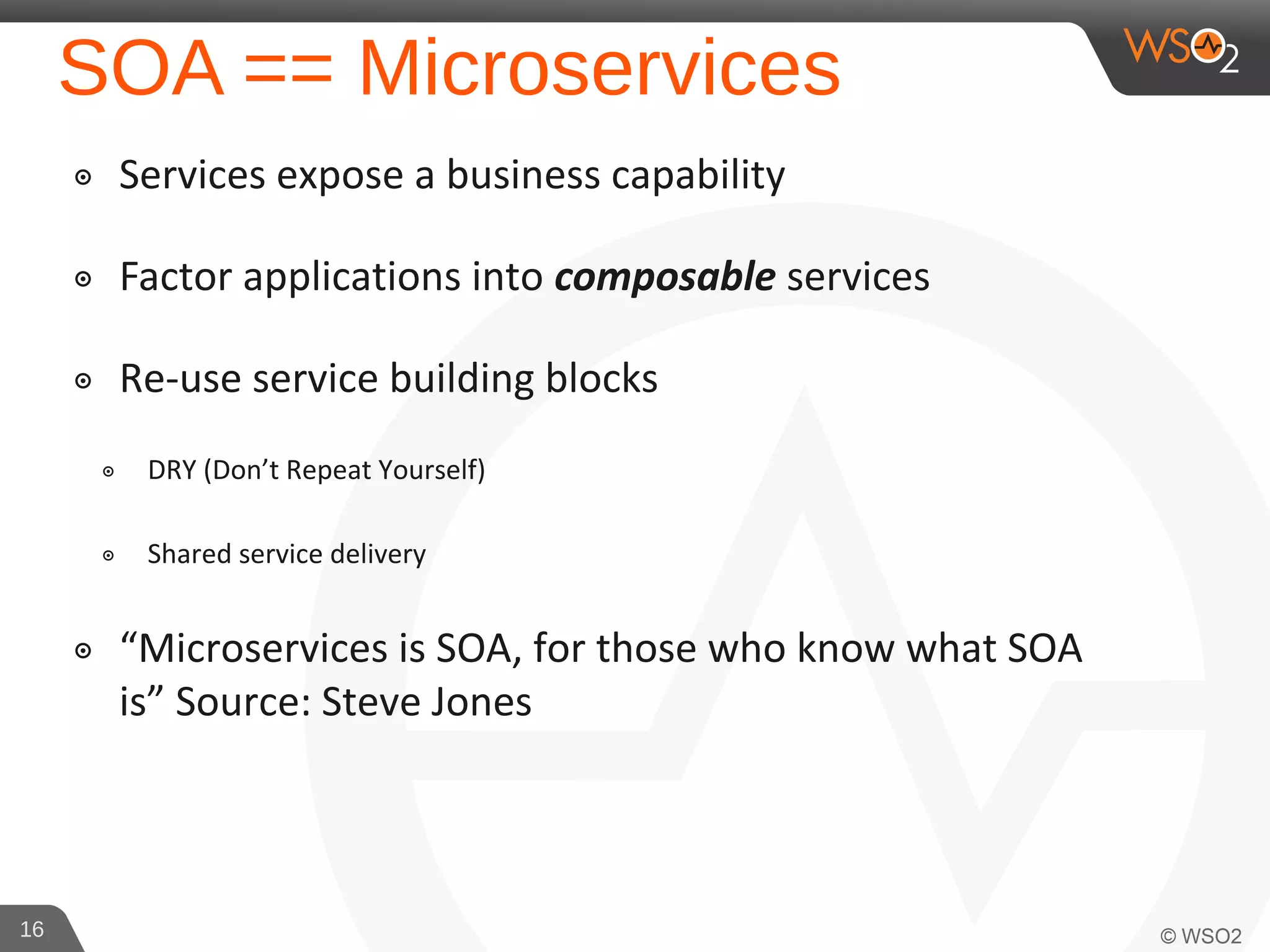
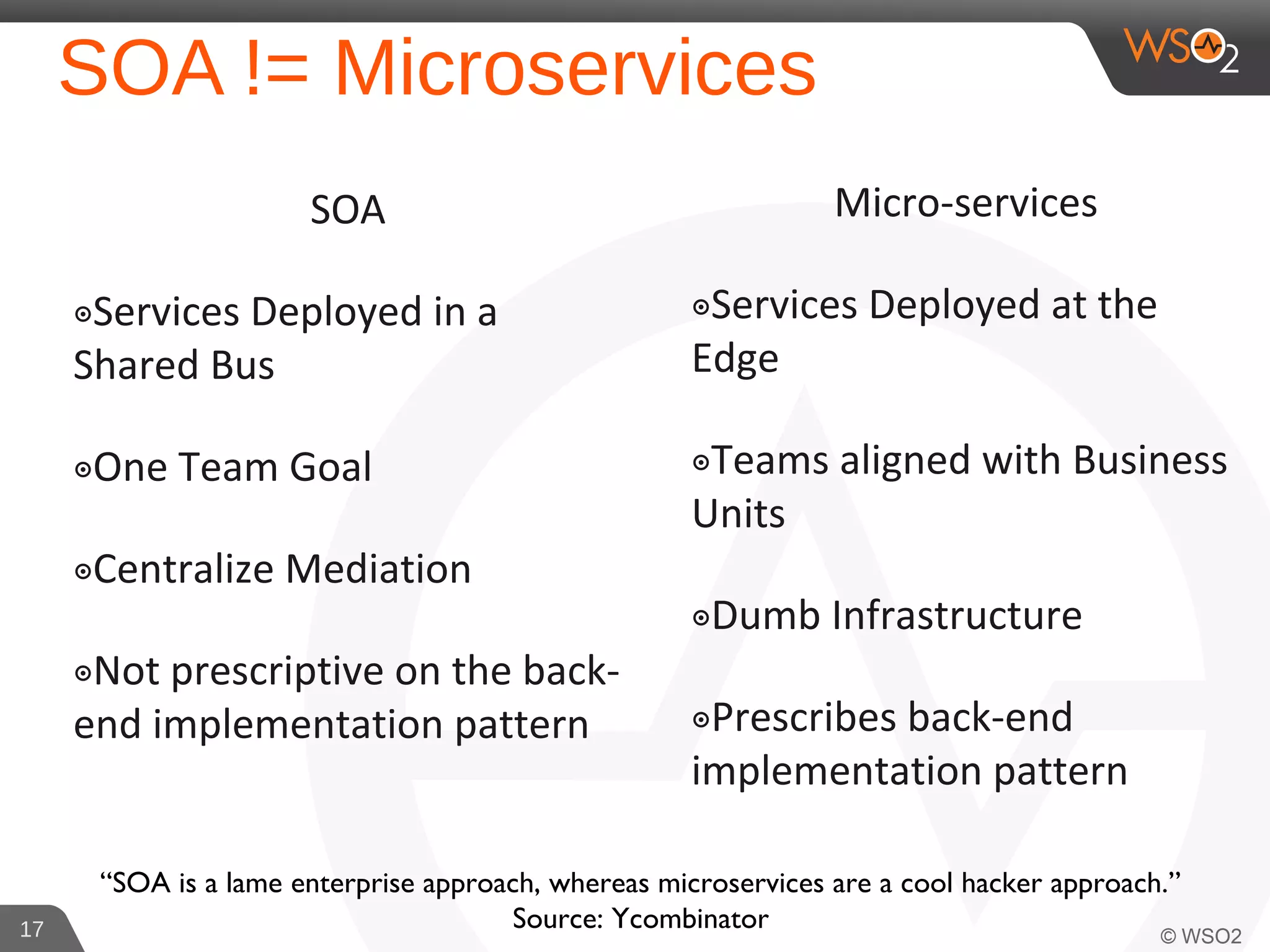
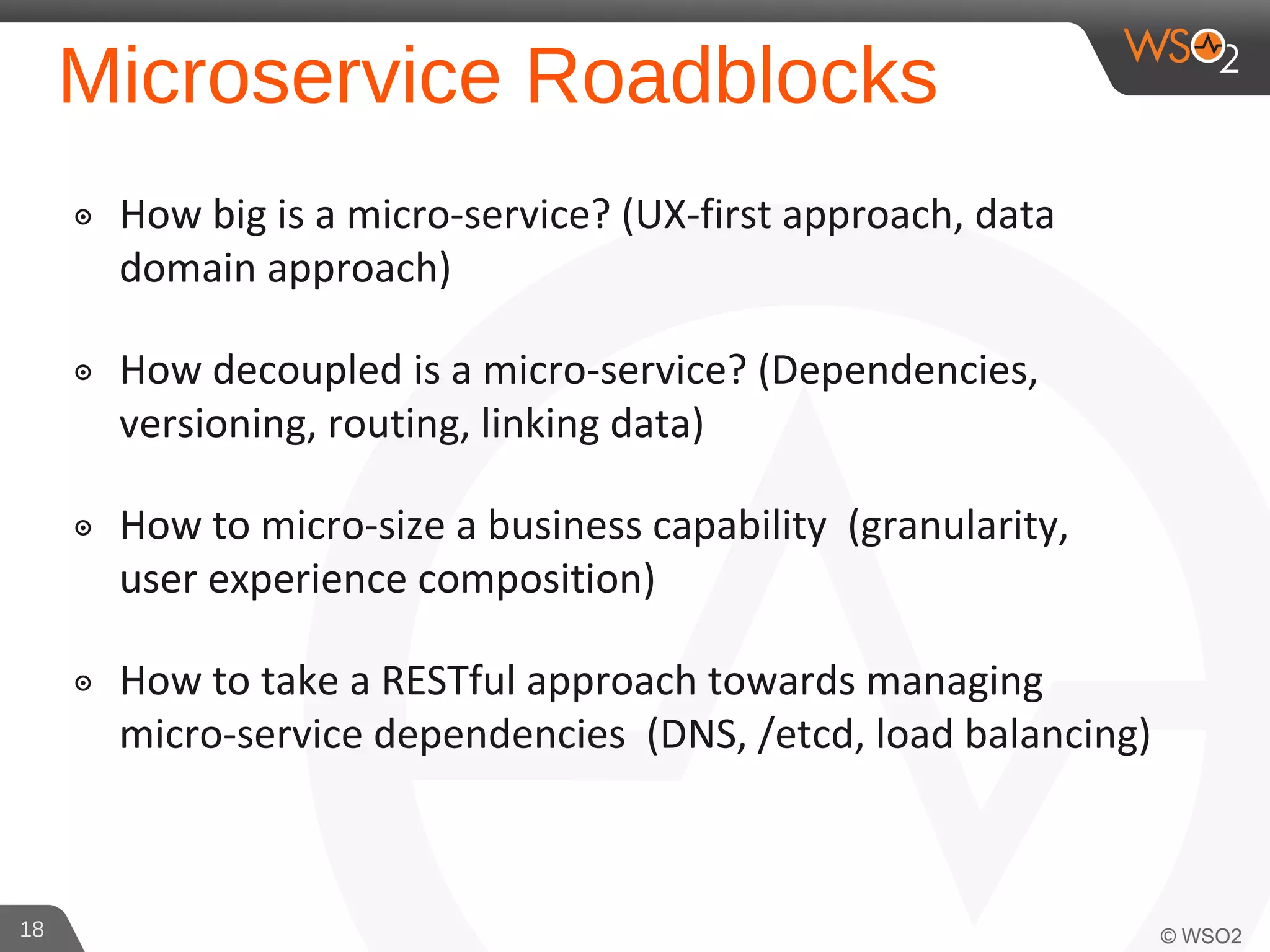
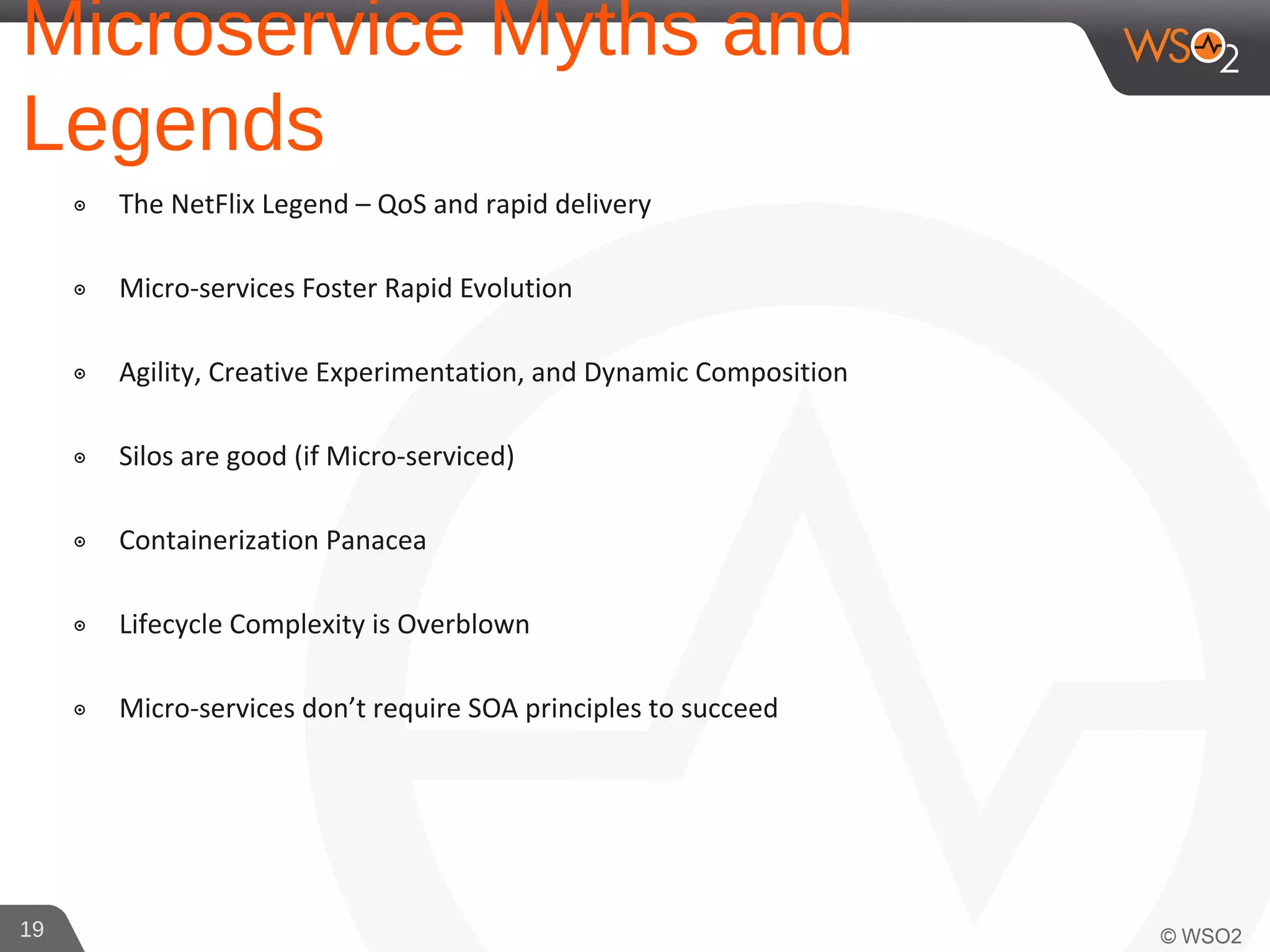
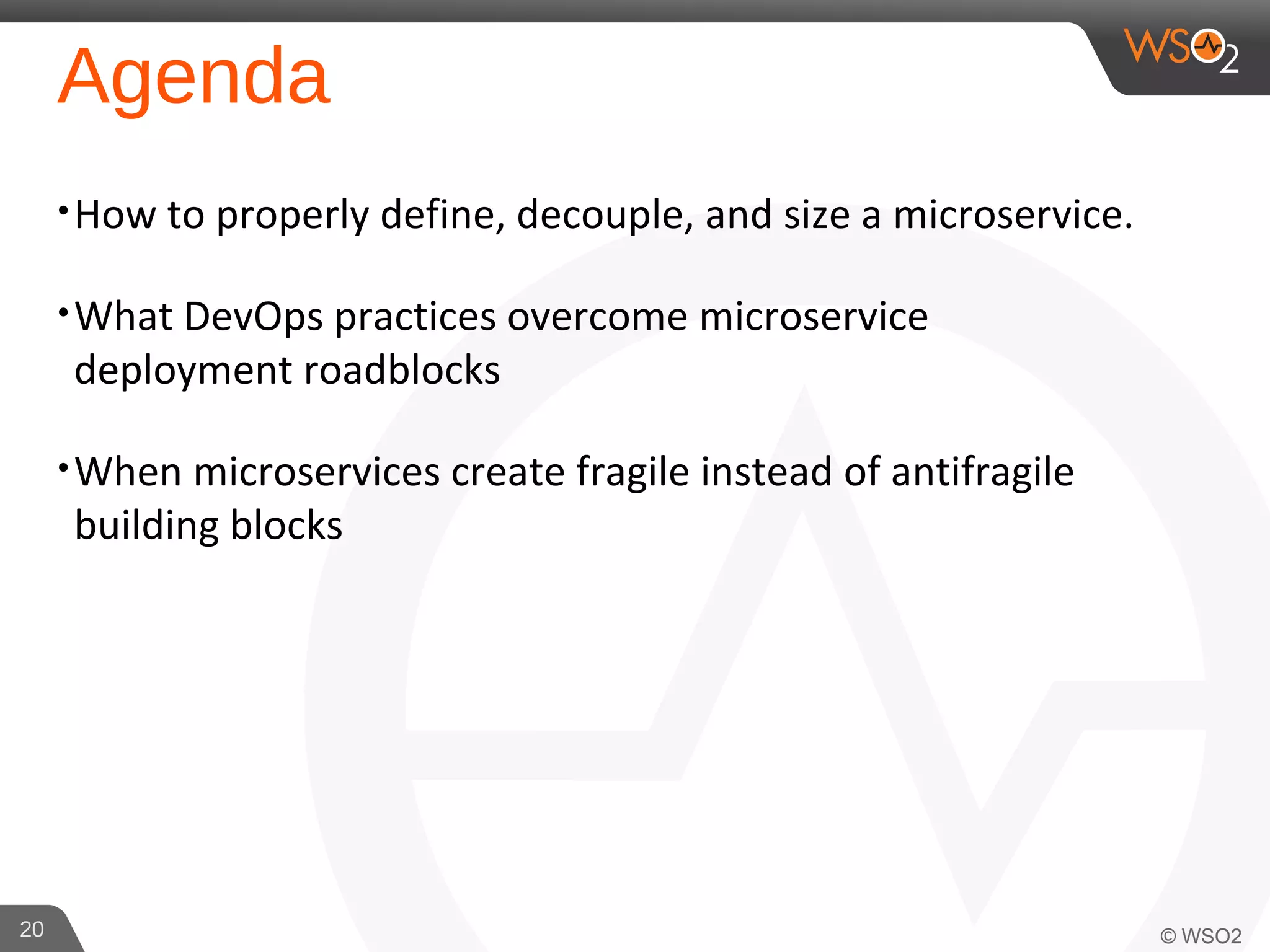
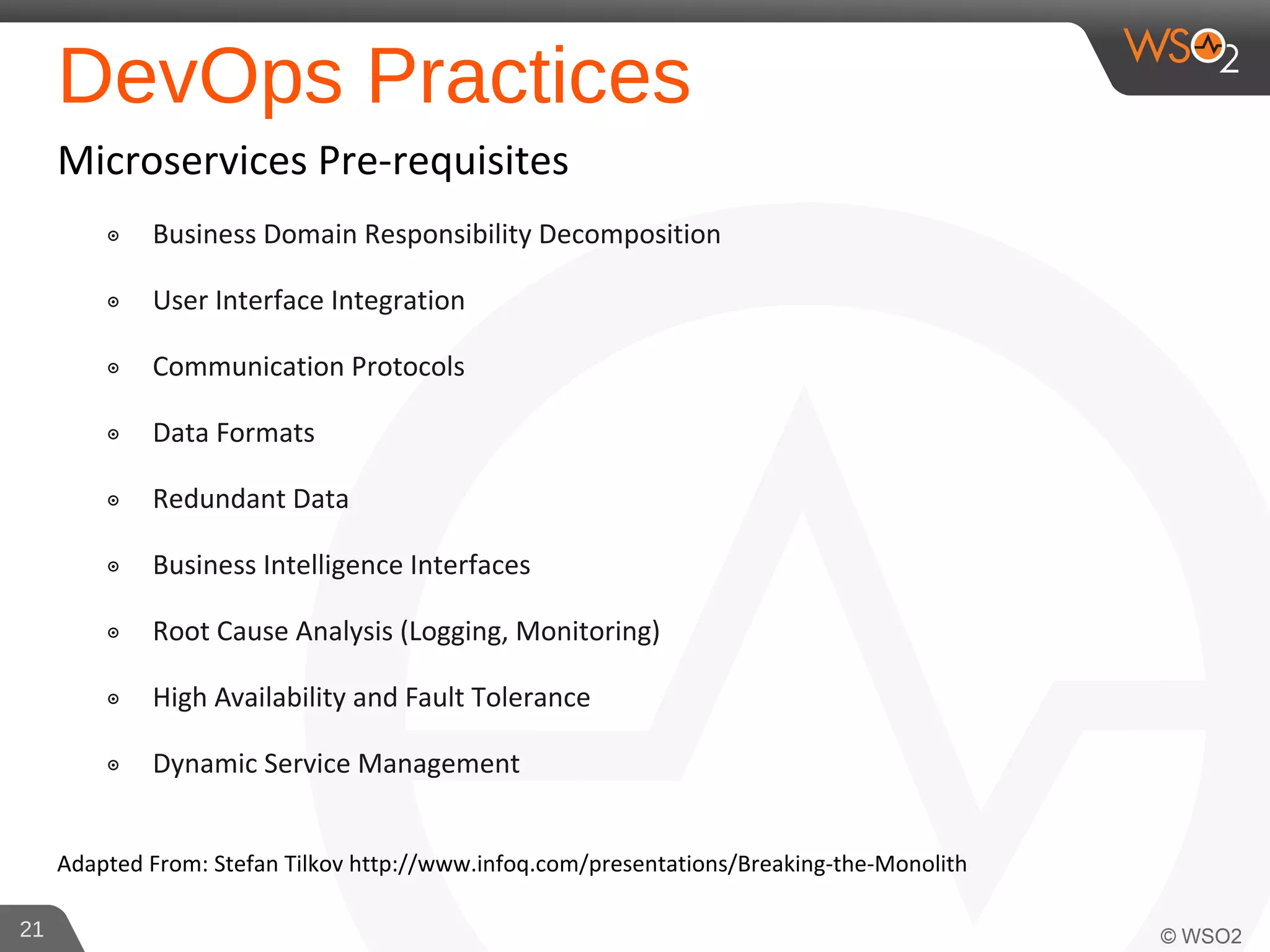
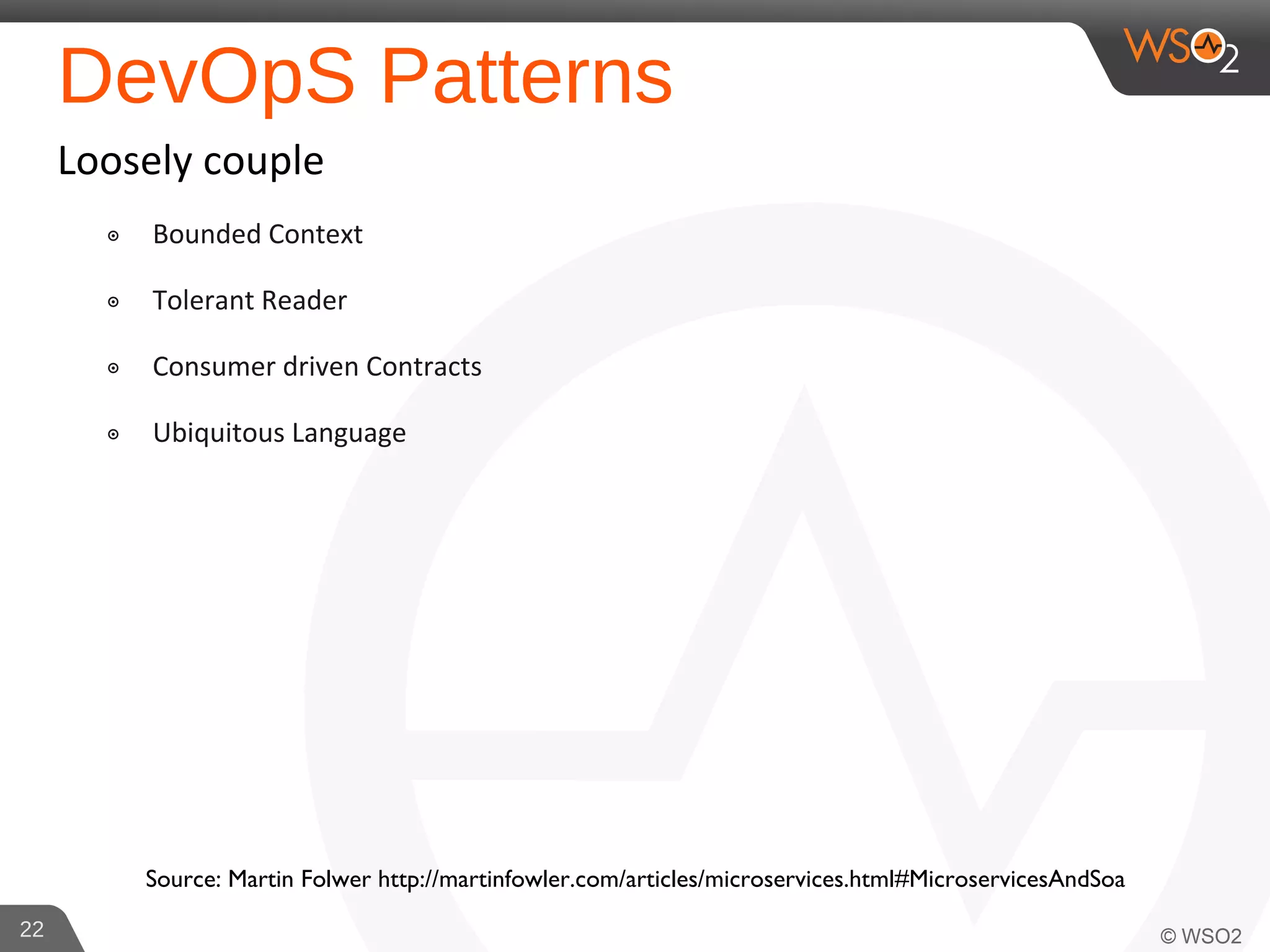
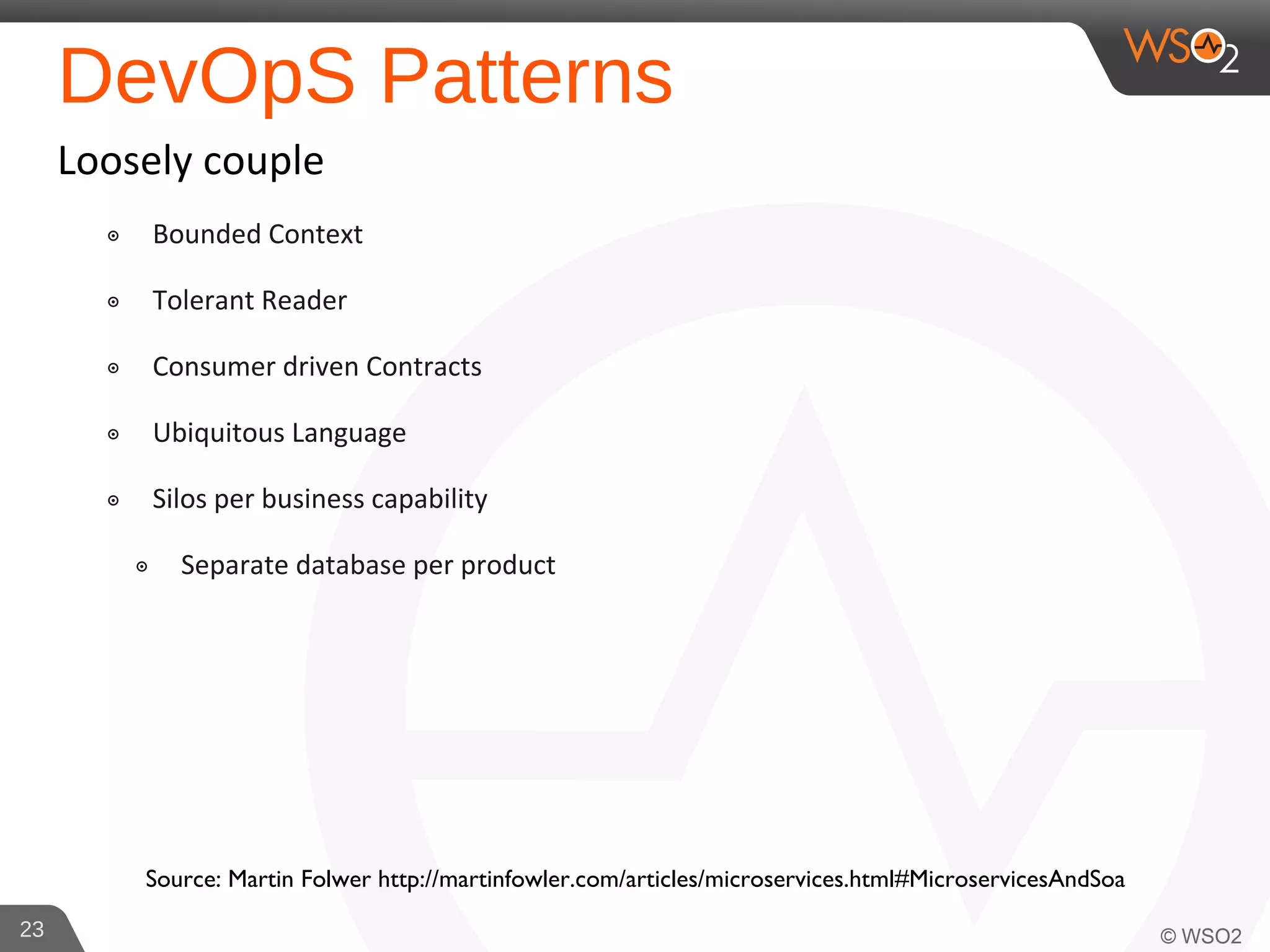
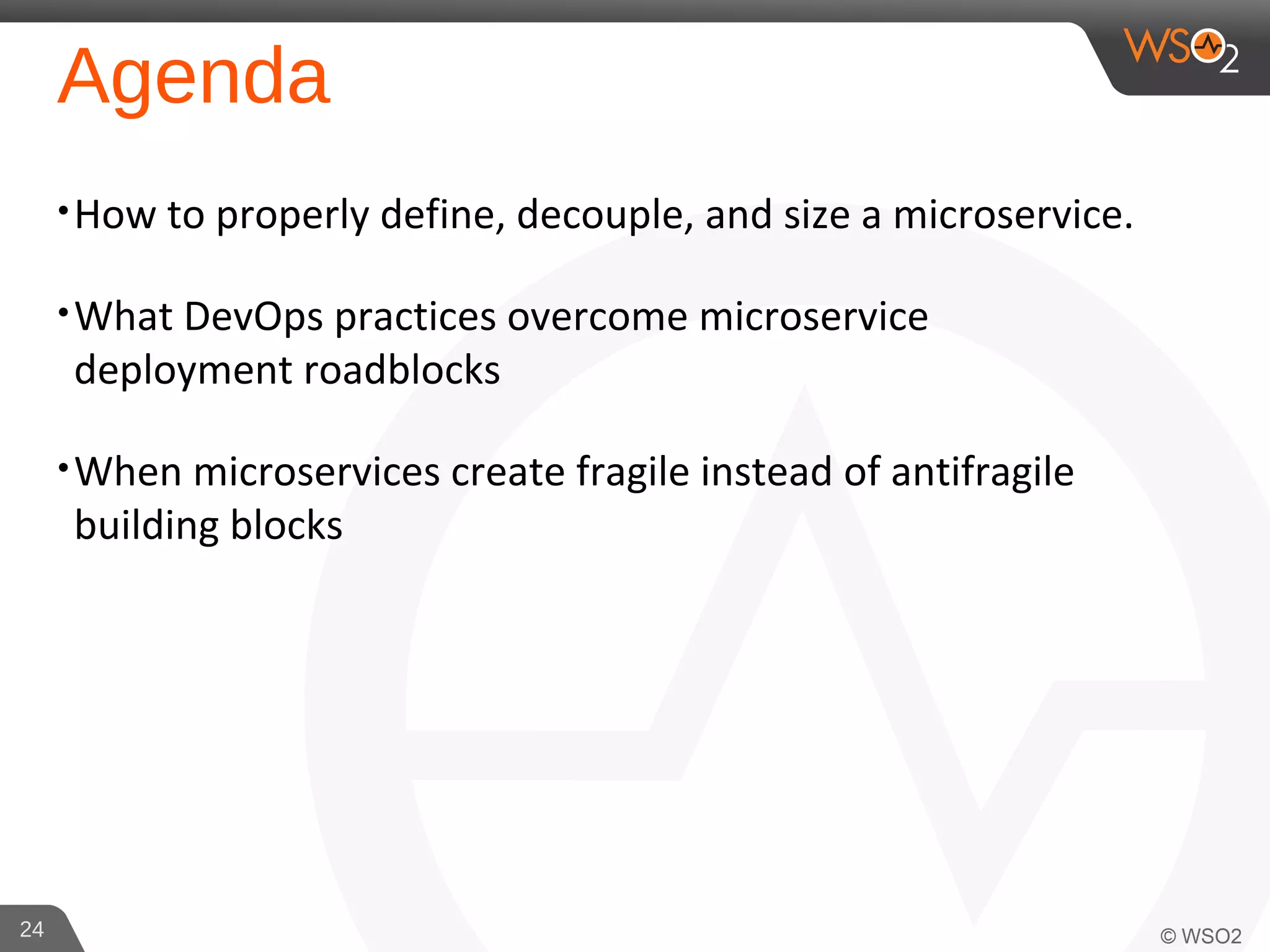
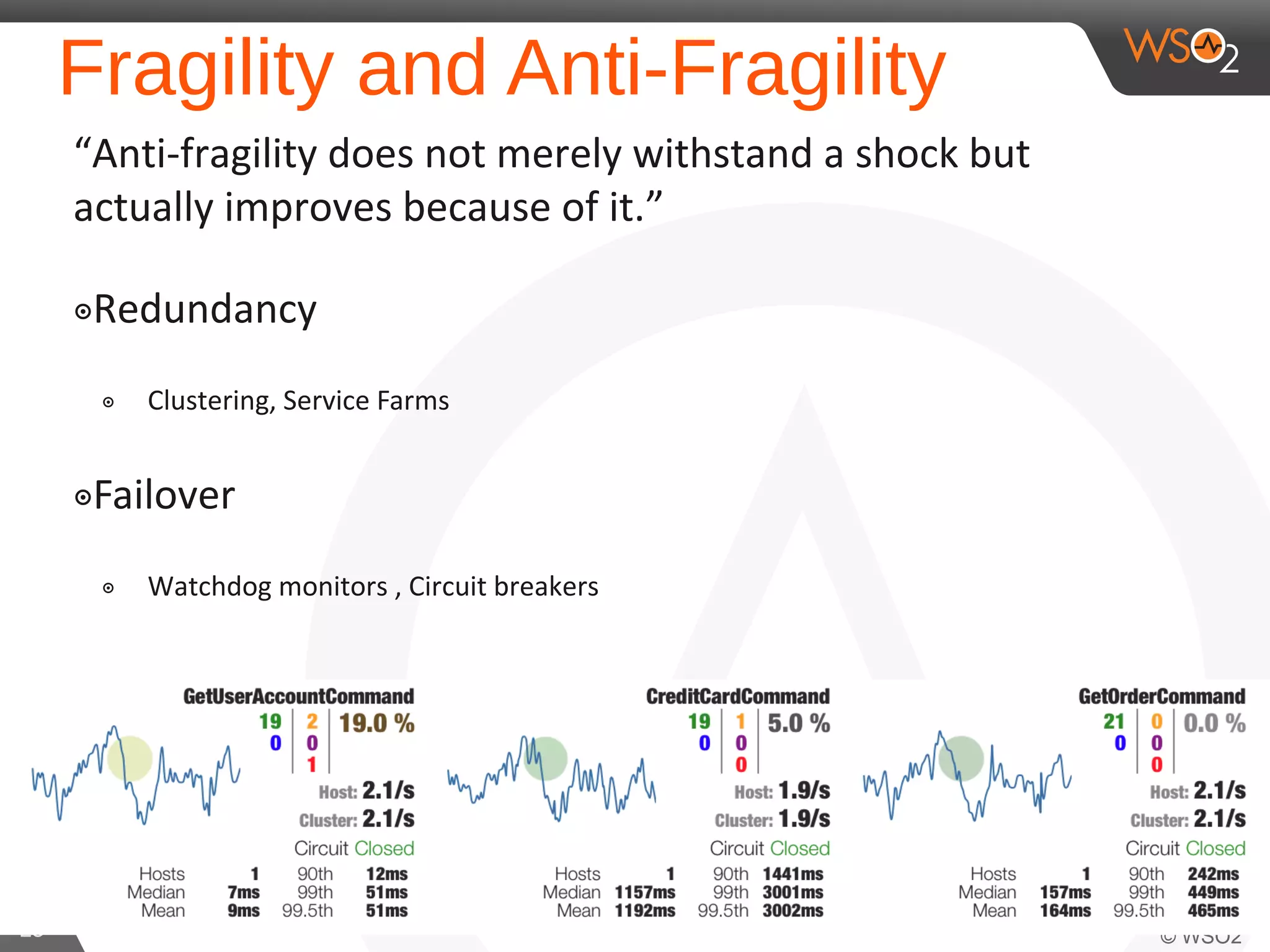
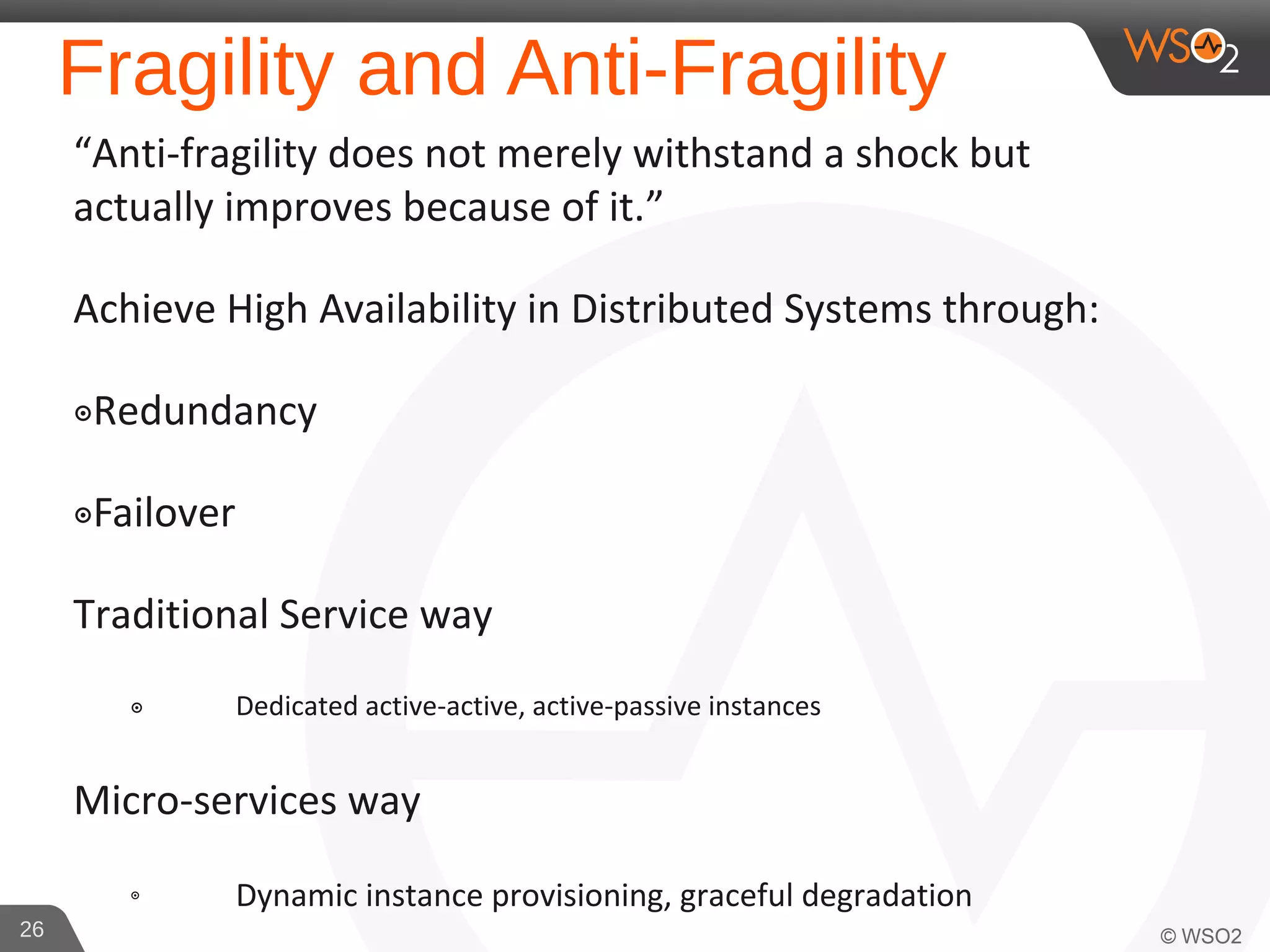
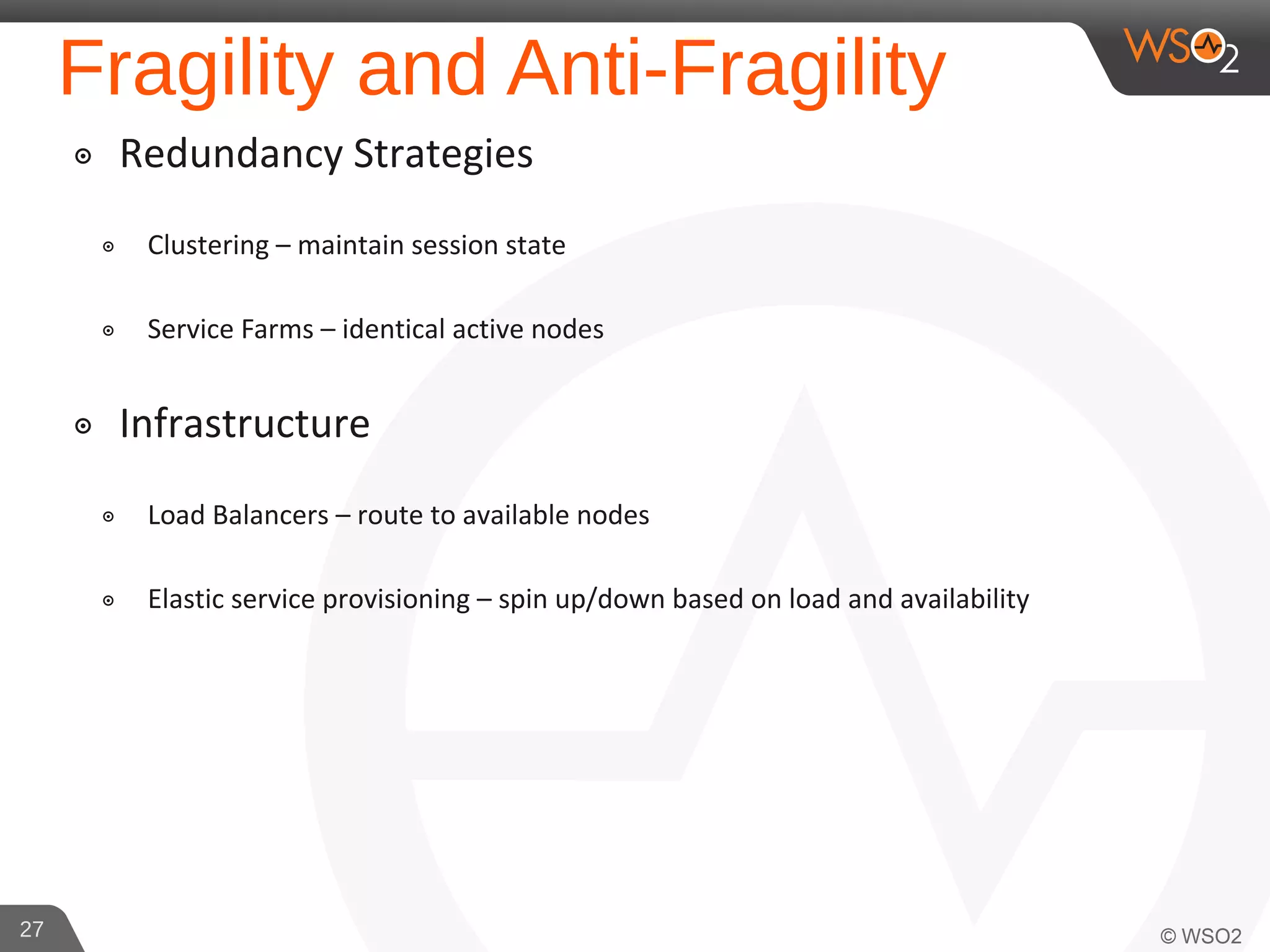
![Fragility and Anti-Fragility
๏ Failover Strategies
๏ Load Balancers – route to available nodes
๏ Watchdog Health Monitors - identify break points
๏ Circuit breakers [https://github.com/Netflix/Hystrix ]
๏ Infrastructure
๏ Intelligent Content Routing
๏ Topics / Queues
๏ Management Scripts – restart service instances
๏ PaaS Service Management
28](https://image.slidesharecdn.com/microservices-2014-0915-v1-150308180545-conversion-gate01/75/Merging-microservices-architecture-with-SOA-practices-28-2048.jpg)
